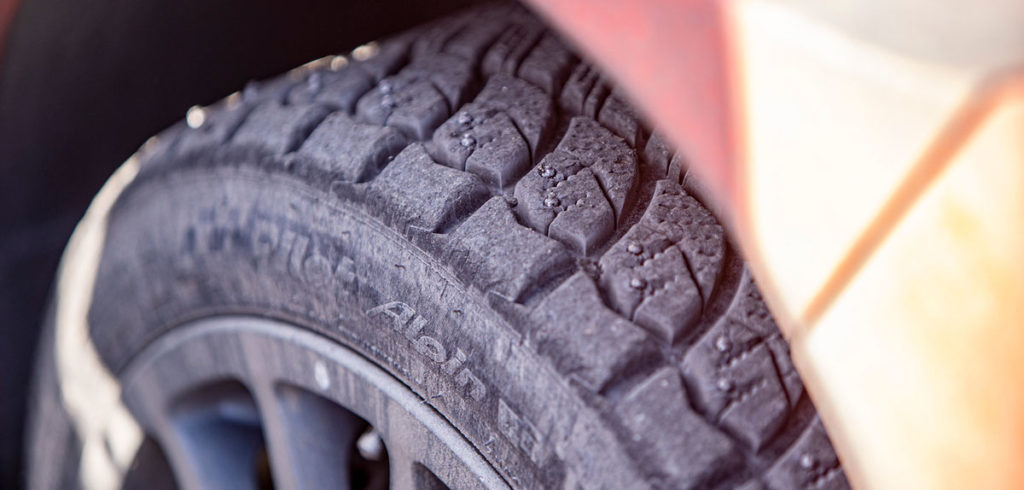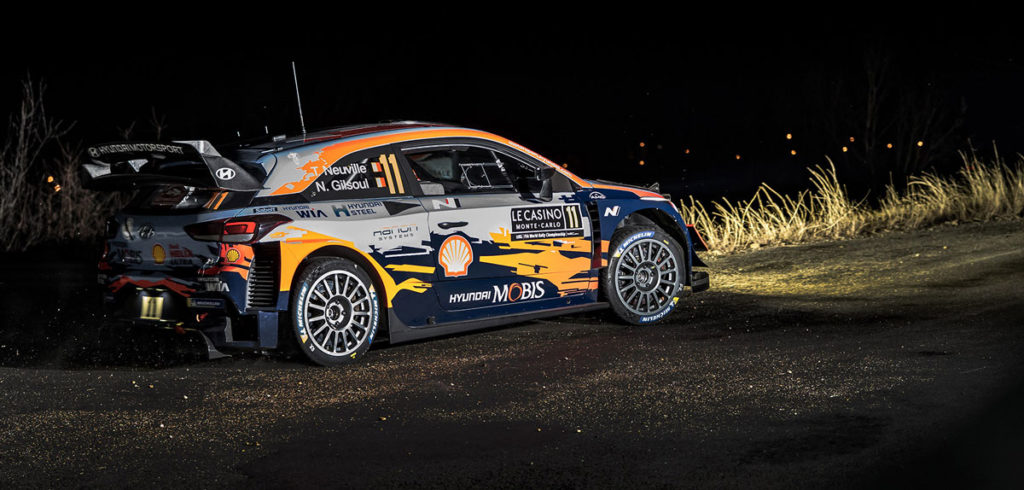Rally Monte Carlo 2020 was characterized by even more unpredictable conditions than usual. The event is almost always a mix of snow, ice and dry tarmac. In 2020 warm daytime temperatures that dropped suddenly with nightfall, upped the stakes for both drivers and their ice crews.
For the opening stages, run on the Thursday night, tire choice was nothing short of a gamble. What was the best combination from a choice of super soft, soft and studded tires? For example, M-Sport’s cars took six tires each – two soft, two super soft and two studs, the tactic being to run a mix of tires through the night. On the early, lower-altitude stage, they fitted a combination of softs and super softs, running ‘across the car’, one of each type of tire on front and rear axles. This approach helps to balance the cars out. If different compounds, or on the later stages studs, were run on just one axle, the result would be either excess oversteer or understeer.
The second stage of the night was at higher altitude, which saw a switch to studs and super softs, again across the car. M-Sport technical director Chris Williams explained, “We felt the last stage would be bad and to be fair it was. At first we thought we may not have made the right choice. In the first hour the cars were on stage, the temperature dropped from 7°C to 5.5°C, but then in the next hour, it dropped down to 1°C. Although the air temperature was above freezing, the ground temperature was below, and that is when you start to get the ice. It is shockingly quick and happens in a matter of half an hour, from ‘It’s damp’ to ‘It’s ice.’ But you have to choose tires three hours before, and at the point we chose there was only 5% ice. We just had to gamble the temperature would drop.”
That opening night was characterized by a phenomenal turn of pace from Hyundai’s Neuville, on a fully slick setup. “When we saw the first guys take six slicks, we thought, that’s brave,” remarked Williams. Despite Neuville’s pace, Williams was adamant M-Sport made the correct choice with its mixed selection. “If you looked at the second stage, in one section [Toyota’s] Evans took something like 12 seconds out of Neuville, running on studs.” On sheet ice sections, the delta between slicks and studs is considered to be around 19s/km.
As Toyota’s Tom Fowler noted, “The tire choice was very difficult, probably one of the most difficult Monte tire choices I can remember. As we got closer to the time on stage, it became more and more complicated, and we couldn’t forecast with certainty whether it would or would not freeze. Our tire calculation showed in the end that if you took two studs and two slicks, you would have exactly the same pace as four super softs. So, we took two studs, because obviously the risk is higher when you only have slicks.”
Like most racers at the top level of motorsport, all WRC teams run extensive simulations to help determine their tire selection. But as with all modeling, they are only as good as the data they are fed. If that data is based on assumptions that may or may not be correct – most definitely the case given the unpredictable weather and changing freezing levels – there is no guarantee that they are accurate. Monte Carlo was a textbook example of this. It is never a predictable event, but in 2020 it upped the ante more than ever and taxed teams’ tire strategists to previously unseen levels.




